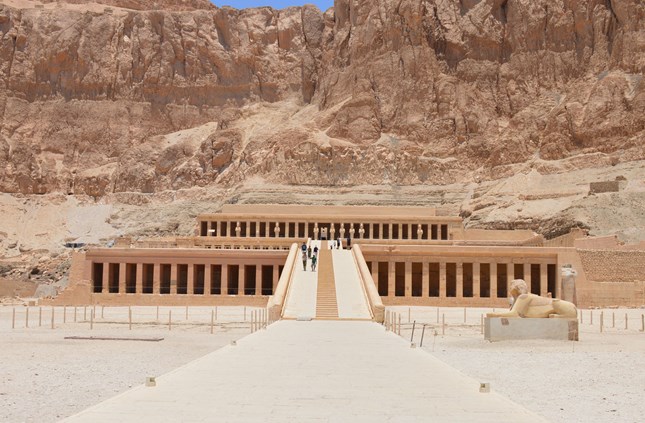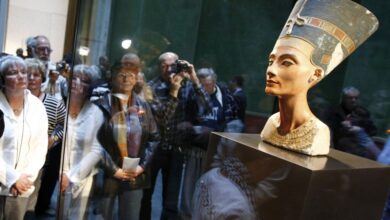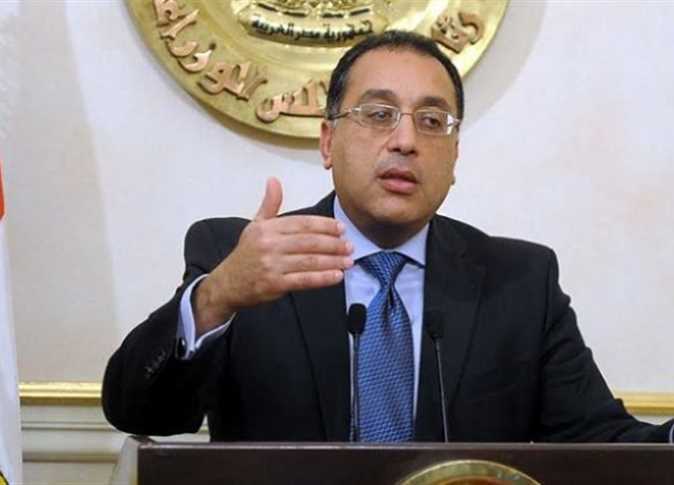
In the previous article, we discussed a portion of the archaeological discoveries announced on January 8th. We concluded by translating the text inscribed in hieroglyphics on the funerary stela presented by Khuthutmes, the overseer of Queen Tetisheri’s palace, to the spirit of his friend, the commander of the chariot forces, Minnakht. This was during the ninth year of the reign of King Ahmose, who expelled the Hyksos from Egypt and founded the 18th Dynasty, marking the beginning of the golden age of ancient Egyptian civilization.
Naturally, archaeologists worldwide were astonished to hear this news and these precise and dated details about one of the most important periods of Egyptian civilization, a period with relatively few contemporary sources: between 1550 and 1525 BC, the reign of King Ahmose. Therefore, it was necessary to publish images of the funerary stela and other discoveries from the tomb of Minnakht, to whom the stela was dedicated by his friend Khuthutmes.
Beyond the historical and archaeological significance of this discovery, it confirms to the entire world just how civilized and advanced Egypt was as a society, one that understood the noblest meanings of friendship and loyalty.
At a time when Khuthutmes was inscribing this funerary stela and offering its contents as an offering to the spirit of his friend, ensuring his name and memory would live on for millennia, Europe was still in the prehistoric era. It would not enter history until the 7th century BCE with the spread of the Phoenician alphabet, more than eight centuries after the death of Khuthutmes.
Moving to the numerous funerary seals that we discovered. These are cone-shaped seals made of fired clay. The circular base of the seal bears an inscription that includes the name and title of the seal’s owner, typically written in three lines, either horizontally or vertically.
The fact that these seals date back to the end of the 17th Dynasty and the beginning of the 18th Dynasty, and were found beneath the floor of the Valley Temple of Queen Hatshepsut, confirms our previous findings that the architect Senenmut had closed and filled the ancient cemetery, and had allocated its site for the construction of the Valley Temple and the ascending causeway to Hatshepsut’s temple at Deir el-Bahri.
Among the most important seals we found was a broken one with a large portion of the inscription remaining. The inscription mentions that the owner of the seal was named Khuthut (different from the previously mentioned Khuthutmes) and was the high priest of Amun during the reign of King Ahmose.
A few examples of this seal have been discovered before, and archaeological references suggest that the tomb of this priest has not yet been discovered. It was previously suggested that his tomb might be located in the Dra Abu el-Naga area, north of the site where I am conducting excavations. It is also possible that we are close to discovering this man’s tomb.
The discovery of numerous 17th Dynasty burial shafts is one of the most significant finds, enriching our understanding of this combative dynasty that bore the burden of armed struggle against the Hyksos invaders.
Within these shafts, we have reached burial chambers belonging to the middle class, where we found coffins, known in academic literature as ‘feathered coffins’ due to the depictions of divine wings that often adorned them, enveloping the deceased and offering protection from the dangers of the afterlife. Among these coffins was one belonging to a small child, no longer than a meter, found sealed, with a rope wrapped around its neck and feet, serving as a carrying handle.
These coffins were all made of local woods such as sycamore and acacia, and the funerary equipment found was very simple, consisting of bows, arrows, weaving tools, pottery, and mats made of papyrus.
The simplicity of the funerary equipment gives us a good idea of the living standards and social class of those buried in this part of the cemetery, as well as reflecting the economic state of a country that had been occupied for over a century.
Notably, in the burials of the 17th Dynasty, there were numerous so-called ‘votive coffins’ dedicated to the god Osiris. These small coffins, no larger than 14 centimeters, were made of wood or clay and bore dedicatory inscriptions. One such coffin, inscribed in hieroglyphics, was said to belong to the king’s son. In a number of child burials dating to the end of the 17th and beginning of the 18th Dynasty, we found shallow burials of young children with simple but beautiful terracotta dolls, which were all that remained of their funerary equipment.
Last year, we transferred the oldest wooden and woven reed bed ever discovered in Egypt to the Museum of Civilization for display, as it is a rare and unique artifact dating back to the late 17th and early 18th dynasties. The bed, along with an earthenware water jar, was found inside a chamber carved into the rock, with a three-step staircase carved into the natural rock as its entrance. Due to the location of the chamber at the entrance of the necropolis and the absence of any indication of its use for burial, we described it as a room for the guards of the necropolis who worked in shifts.
If we move beyond the 17th Dynasty and delve deeper into the site’s history, we will find evidence that it dates back to the Middle Kingdom. This conclusion is based on our discoveries, most notably the discovery of a large tomb dating back to the 12th Dynasty.
After the destruction of Hatshepsut’s temple, which had concealed it, the tomb was reopened and reused during the Ptolemaic period, with many additions and burial chambers being excavated, turning the tomb into a labyrinth.
In the main burial chamber, we found a unique collection of large horseshoe-shaped offering tables made of pottery, depicting the offerings desired by the deceased, such as meat, ox heads, bread, and beer. These tables are a distinctive feature of the 12th Dynasty and are easily recognizable to any archaeologist. We also found the base of a standing statue of an official named Montu-oser, with inscriptions of offerings.
It is difficult to imagine the immense effort and high cost that the architect Senenmut incurred from the state treasury to clear the site and fill in a large ancient cemetery in order to build Hatshepsut’s mortuary temple in that specific location.
Archaeologists and historians have often speculated about the reasons why Hatshepsut chose Deir el-Bahri for her monumental tomb. Some have suggested that her primary motivation was the desire to be near the tomb of Montuhotep II, the founder of the 11th Dynasty and the Middle Kingdom.
Others have proposed that the reason was the alignment of the temple with the Amun temple on the east bank of the Nile. However, based on our recent discoveries, it seems that the most likely reason is that her grandfather Ahmose and her grandmother Tetisheri were buried there.
Our next article will delve into the fascinating discoveries made within the Ptolemaic cemetery that was built over the ruins of Hatshepsut’s temple. We will explore the artifacts unearthed at this site and discuss their significance.




